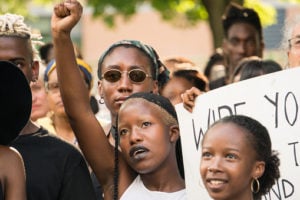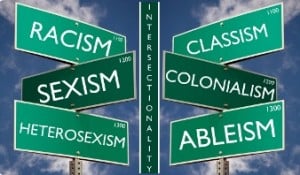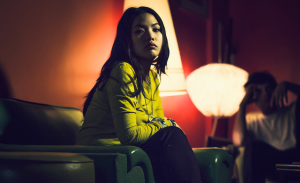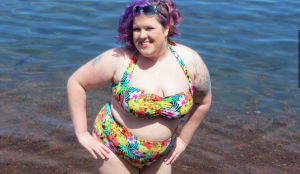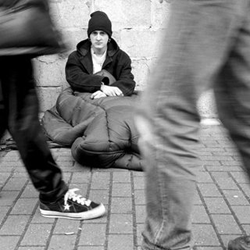
Credit: Affirmation
Back in November 2012, Hurricane Sandy leveled the Ali Forney Center, a New York shelter that provides housing for homeless LGBTQ youth. Not surprisingly, several comments on news articles covering the destruction of the center’s drop-in program seemed to be asking the same question: “Why do we need a homeless LGBTQ center?”
I say not surprisingly because not everyone (including myself a few years back and other members of the LGBTQ community) is aware of how much homelessness disproportionately affects LGBTQ youth.
With young LGBTQ people making up only 5-10% of the youth population, it’s staggering that 20-40% of homeless youth are LGBTQ.
Why Are So Many Homeless Youth LGBTQ?
Family rejection is one of the most significant factors in LGBTQ homelessness. Young people who are either kicked out by parents or run out in the face of violence and hostility because of their sexual orientation or gender identity make up a significant part of the LGBTQ homeless population.
Another factor is housing discrimination—20% of transgender people in the US have been denied housing because of their gender identity, and just as many have experienced homelessness.
Another problem is that LGBTQ youth don’t always feel safe in the foster homes, homeless shelters, and social systems that are in place. They can still experience violence, rejection, and shaming while making use of these services.
For example, gender segregated housing presents a serious risk for misgendering trans* people and placing them in situations where they are put at risk for harassment, violence, and sexual assault.
So even though there are homeless shelters available to the population, they don’t always adequately meet the needs of LGBTQ youth. Some youth even feel safer on the streets than they do in the foster/shelter environment.
That’s why homeless shelters that specifically provide housing for LGBTQ youth are so important.
Resources for Homeless LGBTQ Youth
Though there are huge gaps in addressing homelessness, especially when it comes to minority populations, there are some resources that specifically address the needs of homeless LGBTQ youth.
Homeless shelters that serve LGBTQ youth sometimes offer services in addition to housing, including counseling, medical services, and skills training.
Non-shelter LGBTQ youth organizations also provide resources to homeless LGBTQ people by supporting events and campaigns advocating for better care. For example, the DC Center for the LGBT Community is planning a campaign for better care for trans* people in housing, health, and employment.
So in addition to “for us by us” homeless shelters for LGBTQ youth, there are campaigns, movements, organizations, and task forces designed to raise greater awareness of LGBTQ needs in the shelter system, foster care system, and social work system.
What We Need to Know
The facts about homelessness among LGBTQ youth are hard to face because we don’t talk about them.
In fact, homelessness in general gets swept under the rug or overshadowed when it’s time to talk about who needs what in our communities.
Even LGBTQ people with class privilege or adequate housing can be ignorant of how homelessness affects our communities.
We can say “It Gets Better” for LGBTQ youth as much as we want, but when 58% of homeless LGBTQ youth are sexually assaulted compared to 33% of homeless straight youth, we need to acknowledge that homelessness makes them that much more vulnerable to things getting worse.
We need to acknowledge that homeless LGBTQ are frequent targets of violence, commercial sexual exploitation, human trafficking, police harassment, and all of the other forms of abuse and exploitation that young people out on their own have to deal with.
Homeless people are generally a vulnerable population and given how being homelessness intersects with being LGBTQ (or being of color, transfeminine, etc.), they’re at an even greater risk for health problems and a general lack of safety.
***
Usually, our articles end with some actionable ideas about what you can do to help yourself and others with the information provided in the article. But it’d be far reaching to pretend as if the problems facing homeless LGBTQ youth are adequately presented in this article or will be changed through awareness alone.
But we can still support homeless LGBTQ people by donating our time and money to LGBTQ homeless shelters and campaigns that address the needs of this population, especially ones led by the stories and experiences of homeless youth, who can dictate their own needs and risks better than any statistics, surveys, or articles.
You can also do your part to acknowledge and address the social problems that are leaving so many LGBTQ young people without a safe home. Bullying, violence, family rejection, housing discrimination, and community rejection are all problems contributing to homelessness.
So attacking homophobia and transphobia at the source in our families, communities, and legislation is an important part of the process as well.
And if you know someone who’s LGBTQ and homeless, here are some resources:
Jarune Uwujaren is a Contributing Writer for Everyday Feminism. A Nigerian-American recent graduate who’s stumbling towards a career in writing, Jarune can currently be found drifting around the DC metro area with a phone or a laptop nearby. When not writing for fun or profit, Jarune enjoys food, fresh air, good books, drawing, poetry, and sci-fi.
Search our 3000+ articles!
Read our articles about:
Our online racial justice training
Used by hundreds of universities, non-profits, and businesses.
Click to learn more







